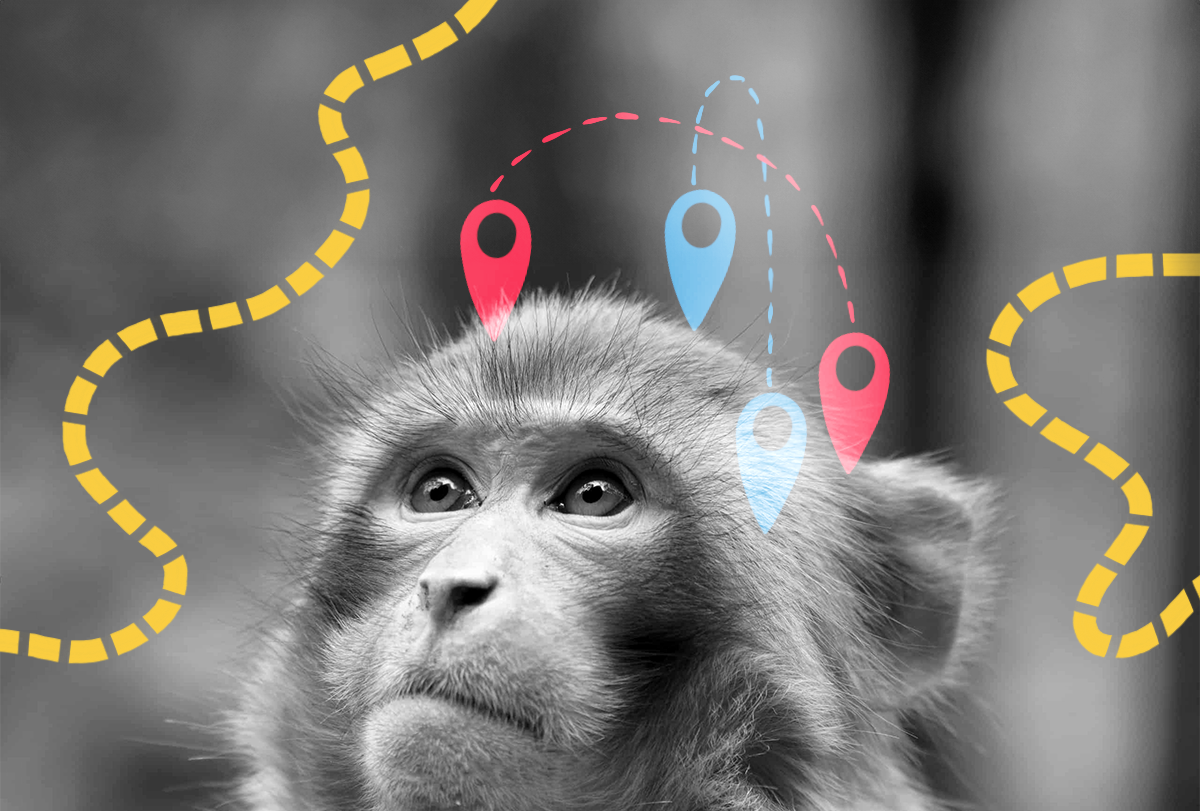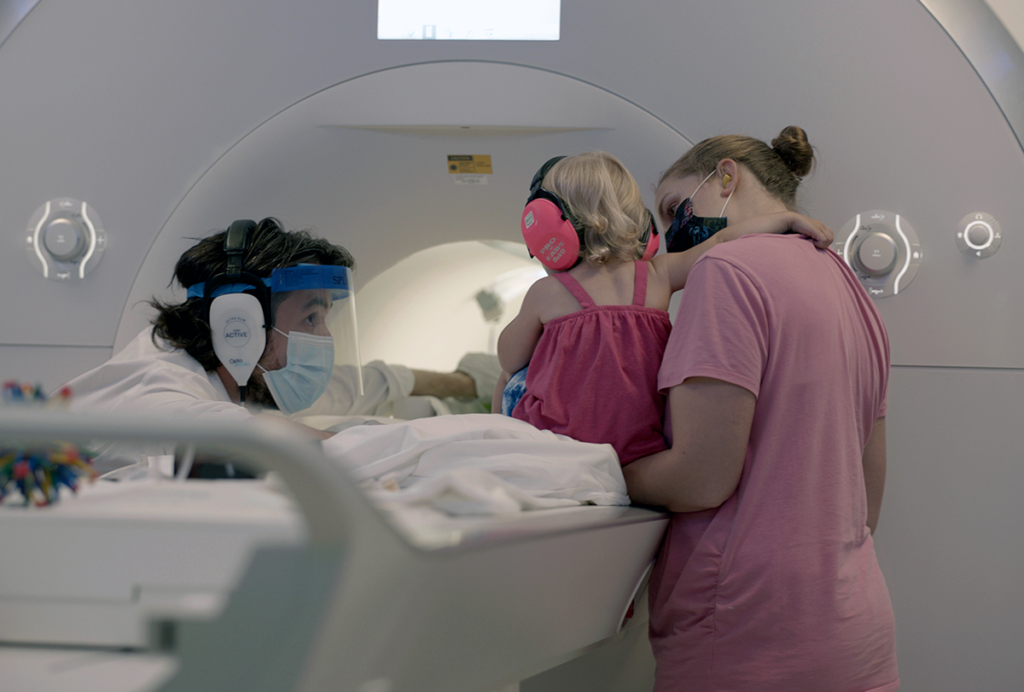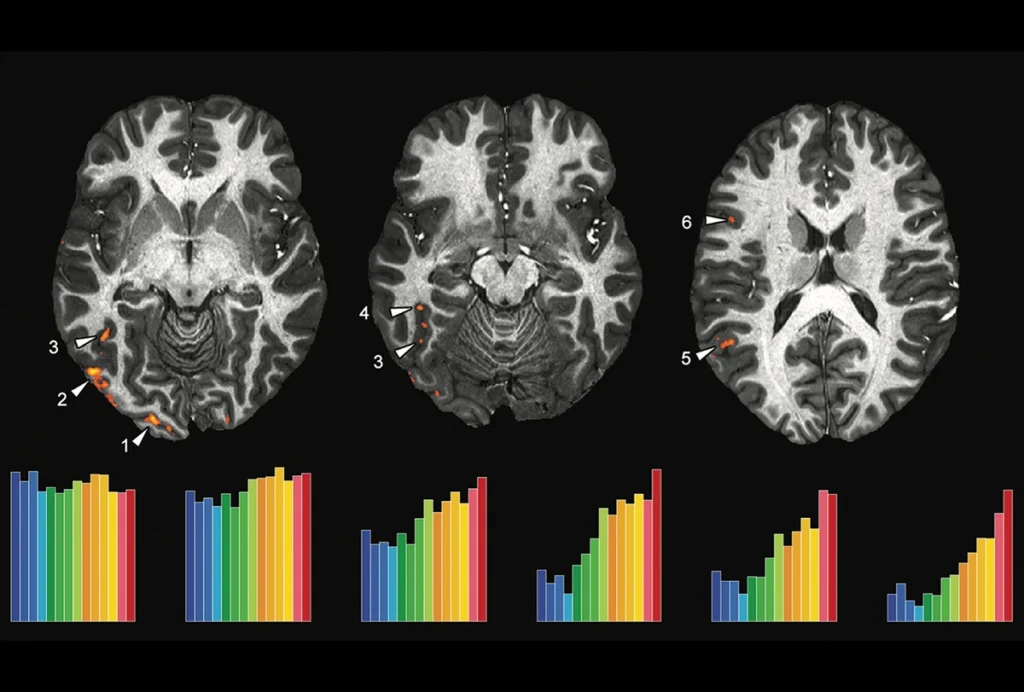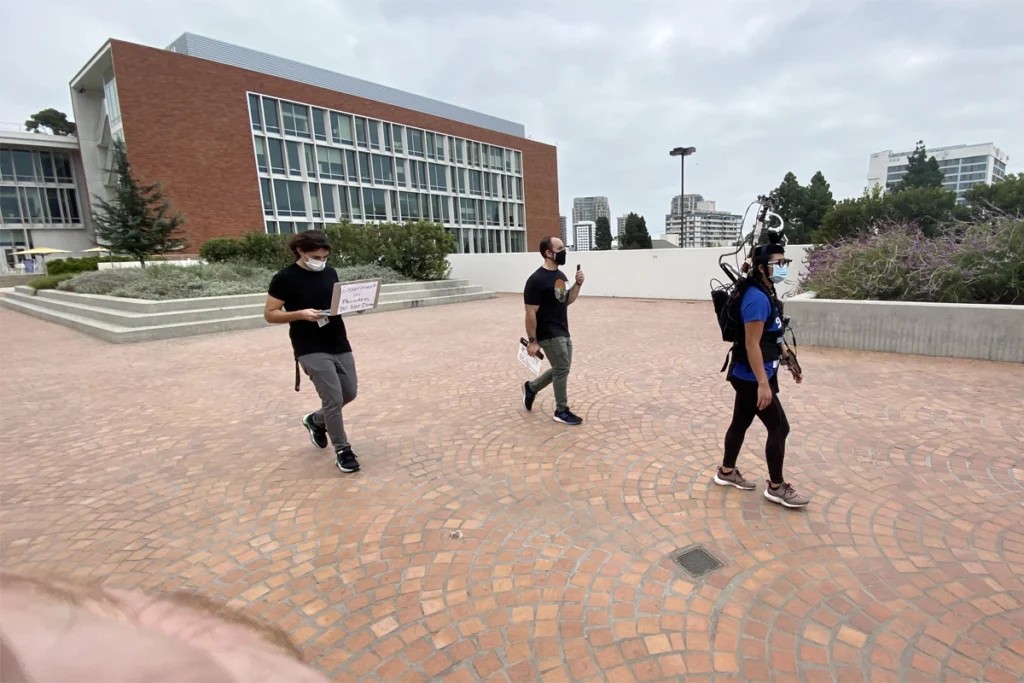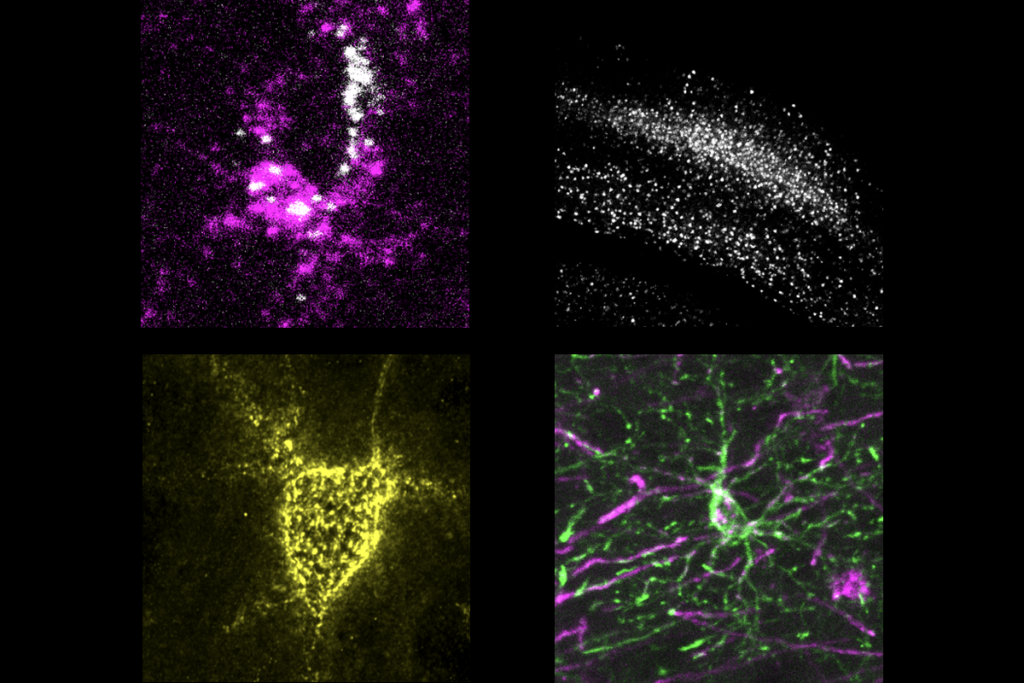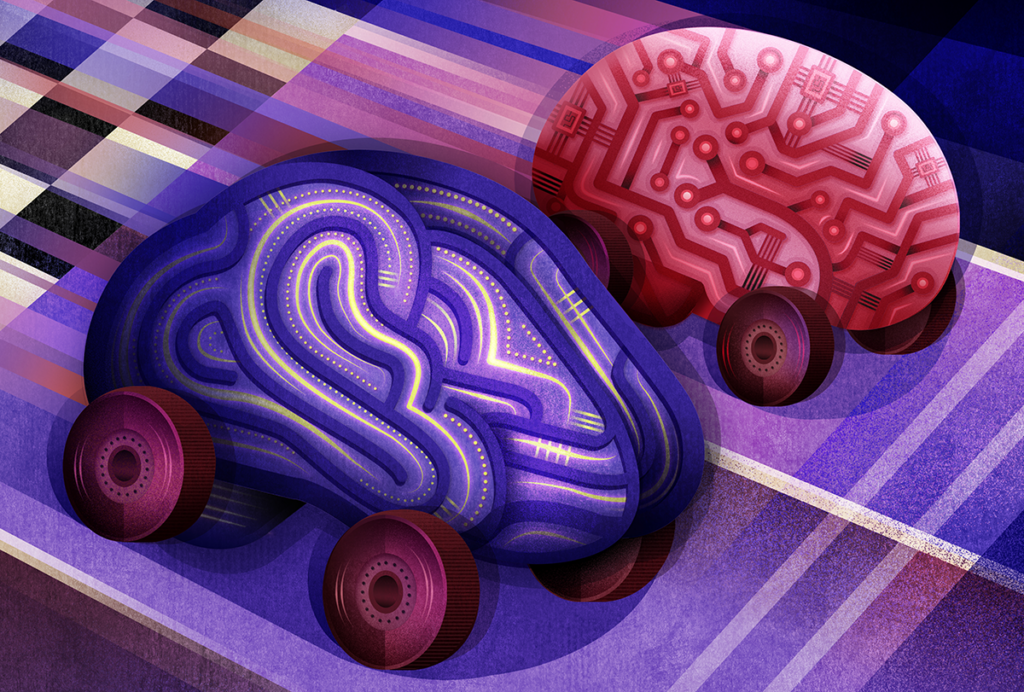Monkeys can memorize a sequence of images and then toggle between them in their minds, a new study has found. Each mental move is associated with a tiny burst of brain activity that could be the neural representation of a thought, the study authors say.
The study is the first to find evidence that an animal creates cognitive maps based on experience and later uses them exclusively, without any sensory input, to navigate a new task. It also marks one of the first times researchers have registered brain activity tied to an ongoing, complex thought process.
“It’s a very fluid process—the process of thinking. And we have no way in animals to know what they’re thinking and therefore map what we record in the brain to what’s happening in the mind,” says study investigator Mehrdad Jazayeri, professor and director of education, brain and cognitive sciences at MIT’s McGovern Institute and a Howard Hughes Medical Institute investigator. In the new study, however, Jazayeri and his team designed a task that requires the animal to imagine a specific scenario at a specific time. “Imagination: There’s no magic to it; it’s a pattern of activity in the brain,” he says.
Previous studies suggest rodents use cognitive maps to recreate the past and predict future possibilities. The new study, published last month in Nature, suggests monkeys also engage in such mental simulation and do so in the present—imagining states of the world that they just can’t see.
“It’s a little bit like an animal navigating in the dark, where they’re using an internal map of where they are and where they’re going to update their sense of how close they are to their goal,” says Loren Frank, professor of physiology at the University of California, San Francisco, School of Medicine and a Howard Hughes Medical Institute investigator, who was not involved in the work. “Our brains do this all the time. But this study gives us a sense of how they do it and shows there’s an identifiable underlying process. It’s a really nice step forward.”
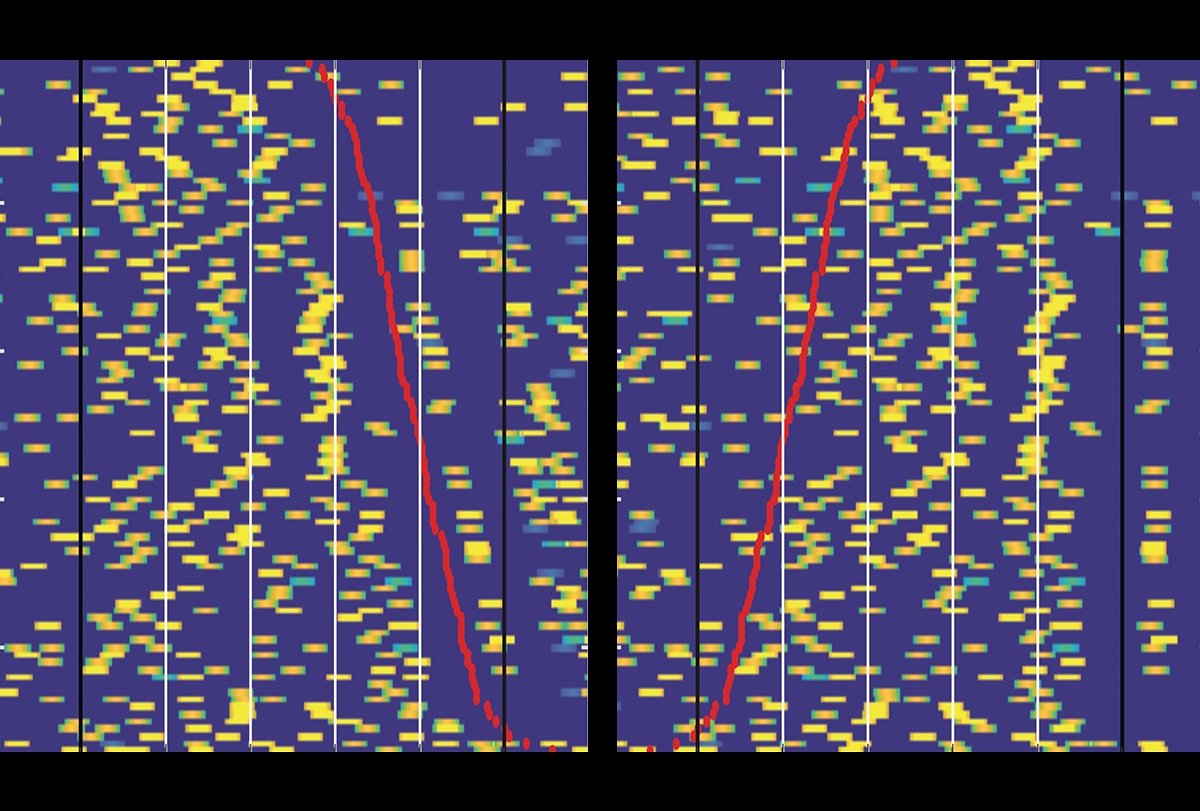
Because monkeys are closer to humans than rodents are, the new study offers clues to how people call on cognitive maps to tackle spatial tasks, like moving from point A to point B, and more-abstract tasks, like managing a complex project or navigating a tricky interaction.
“It’s like when we’re sitting in our office or lying in our bed and thinking about what we’re going to do today or how we’re going to achieve a particular aim,” says Albert Lee, associate professor of neurology at Harvard Medical School and a Howard Hughes Medical Institute investigator, who was not involved in the new study. “We say, ‘OK, I haven’t done this exact thing before, but my understanding of this system will allow me to predict whether a good or a bad thing is going to happen and inform whether I should change my behavior.’”
T
he concept of cognitive maps emerged in the 1940s, when psychologist Edward Tolman showed that rats could learn shortcuts through a maze by mentally piecing together different parts of the puzzle. These maps reside in the hippocampus, John O’Keefe and Lynn Nadel later proposed, based on O’Keefe’s Nobel Prize–winning discovery in rats of so-called place cells—neurons that fire in association with an animal’s particular location. Since then, studies have expanded the neural territory that cognitive maps are thought to occupy to include the entorhinal cortex.Although experience is critical for building cognitive maps, whether animals require sensory input for accessing and applying the maps was previously unclear.
In the new study, Jazayeri and his colleagues trained macaques to learn a sequence of images presented on a screen. The monkeys never saw the sequence in full. Rather, they learned small stretches of the sequence, some of which overlapped. The monkeys got rewards for using a joystick to toggle left or right from one image in the sequence to another. For instance, they might be asked to move from an apple to a banana, never having seen that specific stretch of the sequence before. Instead, they had to deduce whether to move left or right from the apple to get to the banana based on the map of the sequence they pieced together in their mind.
The researchers then tested the monkeys’ ability to navigate from one image to another when all the images in between were hidden. This task required the monkeys to draw on their cognitive map to deduce both the direction and the distance between the two images.
The monkeys successfully navigated between the images even in the absence of sensory input—the ability to see the other images as landmarks—along the way, the researchers found. And each time they passed a hidden image on the way to their destination, Jazayeri and his team recorded a burst of brain activity in the entorhinal cortex using implanted electrodes—as if the animal was mentally passing each landmark.
It’s unclear whether the monkeys picture the hidden images or simply remember the number of images in between their starting point and destination. Jazayeri plans to explore this question by recording brain activity in the visual cortex during a similar task. If there’s activity in the visual cortex, “that would be pretty strong evidence that they’re actually imagining the images as they go by,” he says.
T
he work is part of an increasingly creative collective effort to understand how the brain “constructs a model of the world and then uses it to do sensible things,” Frank says. His group is particularly interested in how animals use cognitive maps to mentally prototype different decisions and their possible outcomes.“There’s an almost-infinite number of possibilities and a very small fraction of them will actually lead to good results,” he says. “So how does the brain have this sort of generative ability to think about things that are not in front of it and figure out which path to take through this incredibly complicated landscape?”
While Frank and his team are focused on how animals use cognitive maps to predict the future, Lee and his group are exploring how animals use the cognitive maps to revisit the past. In a study published last year in Science, they showed that rats can recreate brain-activity patterns associated with a past navigation task while standing still.
“The animal had to voluntarily generate patterns that were related to locations they had previously visited, but were not at right then,” Lee says. “They did have visual feedback in this case, but the idea was that they had to initiate the same brain-activity pattern that was present when they were actually there.”
Lee likens his experiment to sitting in a chair, looking toward the kitchen, and generating a pattern of brain activity as if you’re already at the refrigerator. Jazayeri’s experiment is “like sitting in that chair and imagining walking to the refrigerator, but the lights are out,” he says.
Whether reliving the past, understanding the present with missing cues or predicting the future, the ability to reason about the unobservable is a “hallmark of intelligence,” Jazayeri says, and it requires a cognitive map or model of the world. “You cannot think about hidden things; you cannot think about the future or your past experiences unless there’s a structured representation of that information existing in the mind.”
